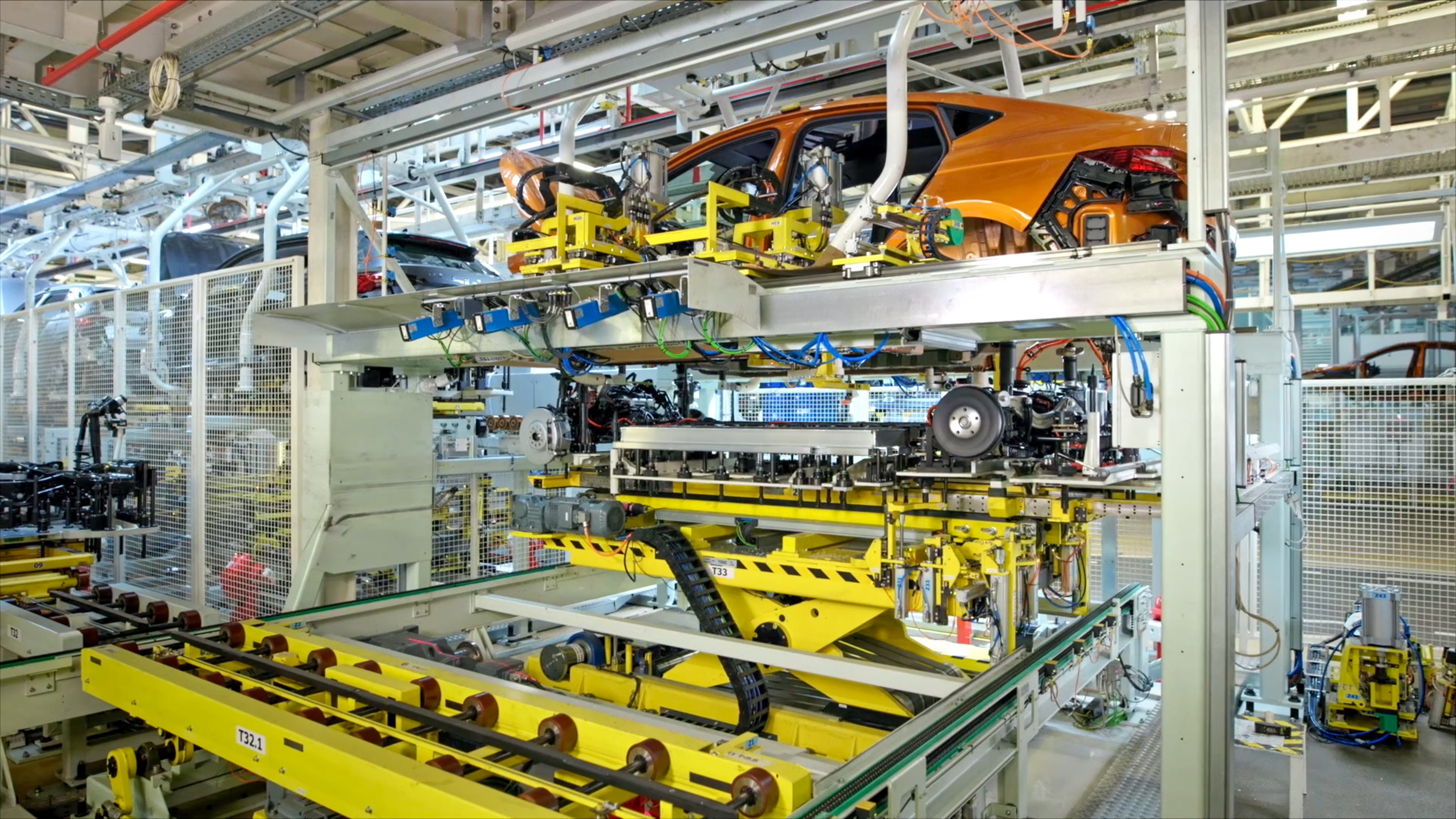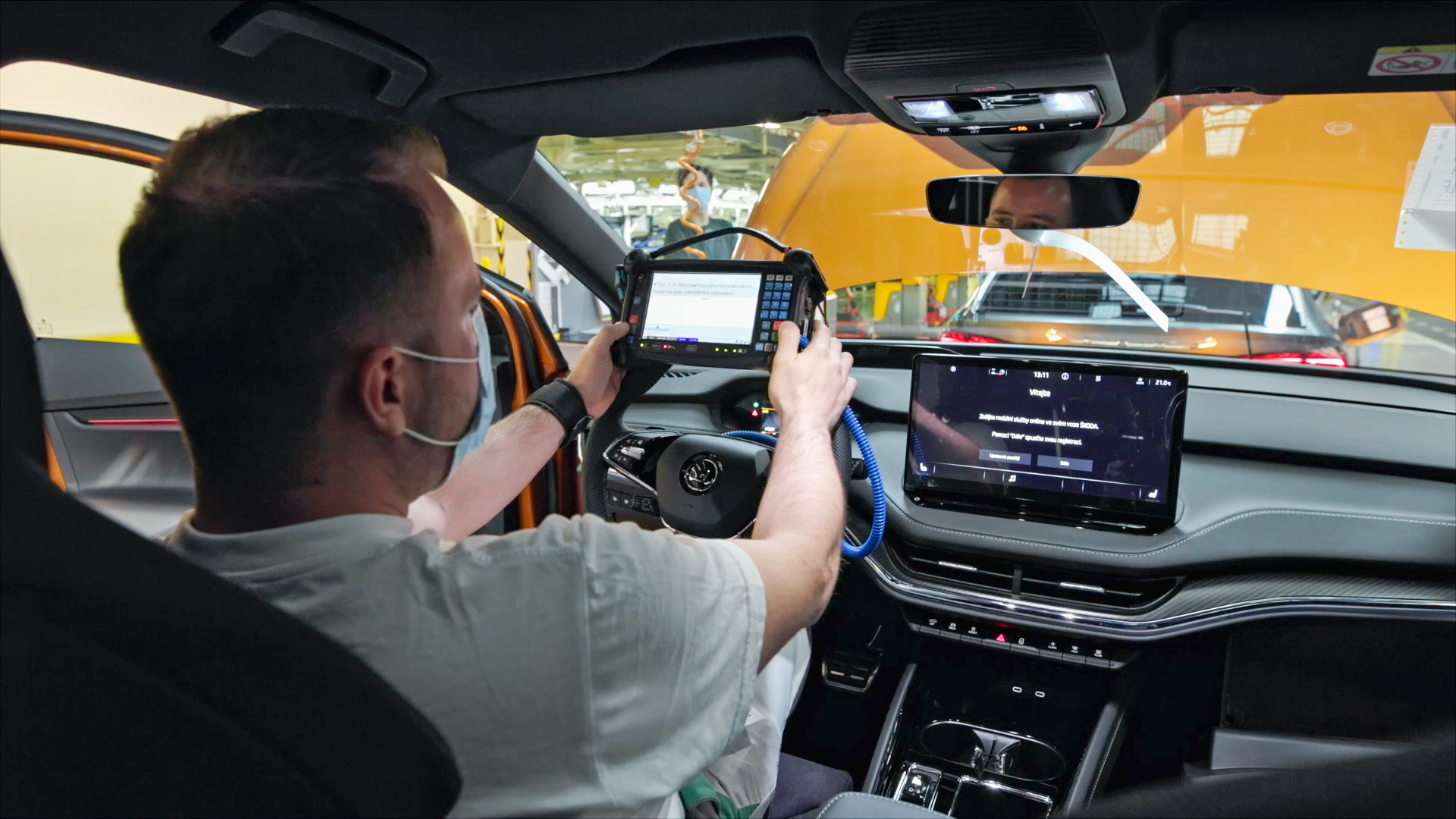Chassis, wedding, bringing the car to life
So how does a battery weighing 500 kilos (that’s the weight of the 12-module version) become the heart of an entire electric car? On the production line where ŠKODA OCTAVIAs are made as well as the ENYAQ iV and ENYAQ COUPÉ iV models, the battery first comes into contact with a robot, which places it on the chassis frame. “The chassis frame with the battery then proceeds down the line for subsequent assembly work,” says Josef Mulka, a BEV and PHEC specialist from the car production management department.
 A robot has placed the battery on the chassis frame.
A robot has placed the battery on the chassis frame.
This work involves connecting the battery to other components. “We attach what’s known as a cable channel to the MEB battery – this connects the vehicle’s front and rear modules. It contains the brake lines, the vehicle communication cable harnesses, the cooling lines for high-voltage components and the orange high-voltage harnesses. As part of the chassis assembly, we connect everything up to form one functional unit,” explains Mulka. At this stage, a charging socket for later charging of the vehicle or electric motor – or two electric motors in the case of all-wheel drive ENYAQ iV vehicles – is connected to the battery and other components.
 The “wedding” connecting the finished chassis with the body
The “wedding” connecting the finished chassis with the body
The outcome is a finished chassis that is ready for the “wedding”. This is the term used for the connection between the chassis and the body. The battery itself is connected to the body with 16 or 24 bolts around its perimeter (the number depends on the size of the battery) and four in the middle of the battery. The “wedding” is fully automatic and conducted by a robot that also bolts the front and rear axles to the body.















